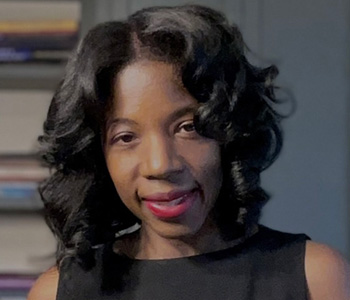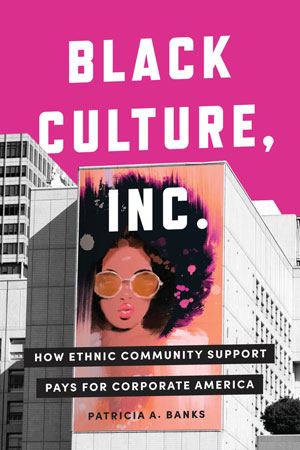
In recent years there has been growing attention to the social responsibility of business. With a focus on ethnic community support (i.e., philanthropy and sponsorships related to ethnoracial minorities), Black Culture, Inc. sheds light on the promise and perils of corporate social responsibility.
More specifically, in Black Culture, Inc., I examine how corporate support of Black culture serves as diversity capital for the firms themselves. Diversity capital consists of cultural practices and values that allow organizations to solve problems and leverage opportunities related to race, ethnicity, and other social differences. In a series of case studies focused on the National Museum of African American History and Culture (NMAAHC), the National Civil Rights Museum, the Essence Music Festival, the Inspiration Celebration Gospel Tour, and Afropunk, I show how companies use ethnic community support to project an image that they care about African Americans and equity.
Diversity framing is one of the fundamental mechanisms through which ethnic community support serves as diversity capital for firms. Diversity framing is the use of words, phrases, images, and sounds to communicate that ethnic community support is a manifestation of a company’s valuing of diversity. For example, a seven-figure gift to an institution such as NMAAHC serves as a diversity sign which communicates that a firm values equity. Diversity framing reinforces this meaning. For instance, a firm may circulate a press release that talks about the amount of money donated to a museum like NMAAHC and includes statements from executives testifying to the firm’s commitment to diversity.
In many instances, ethnic community support benefits nonprofits, firms, and the public. It allows firms to communicate to stakeholders that they value equity, provides nonprofits with money and other needed resources, and enriches local communities. In some cases, though, ethnic community support also has another side—diversity airbrushing draws attention away from corporate practices that do not serve racial equity.
Black Culture, Inc. addresses the question, “What role can business play in contributing to racial equity and the public good more broadly?” In the book I show how ethnic community support can be a win-win for business and society, but tensions can also emerge.
When firms donate to capital campaigns for new African American museums, for example, they help to support public access to the arts, the preservation of art and artifacts, and the recognition of artists. Benefits also accrue to the company. Their gift is a form of diversity capital that projects an image that the firm values Black people and inclusion.
However, there can also be tensions between profit and purpose. This includes, for example, cases where ethnic community support promotes products and services that can cause harm, such as tobacco products. In such cases, firms’ economic and social objectives are partly in conflict.
I became interested in investigating ethnic community support through my earlier research on cultural patronage. My first book, Represent: Art and Identity Among the Black Upper-Middle Class, examines Black cultural capital. In Represent, I draw on over 100 in-depth interviews with African Americans, photographs of art displayed in homes, and observations at arts events, to elaborate on how racial identity is constructed through the consumption of Black visual art.
Research for Represent inspired my second book, Diversity and Philanthropy at African American Museums. In that book, I draw on over 80 in-depth interviews with supporters of Black museums across the United States to gain insight into why patrons give to these institutions. While doing fieldwork for this project, I kept coming across evidence of corporate gifts to the museums, and I wondered, “Why do firms engage in ethnic community support?” Black Culture, Inc. helps to answer this question. Ethnic community support is not purely altruistic. It also benefits firms by serving as a form of diversity capital for them.
“The Racial Return,” chapter 2 in the book, reveals, through the lens of the National Museum of African American History and Culture, how strategic partnerships between organizations in the nonprofit and private sectors can be mutually beneficial. When NMAAHC opened in 2016, it became the first African American Museum on the National Mall. This museum, now widely regarded as a national and international treasure, took over five hundred million dollars to build. The corporate sector contributed millions of dollars towards this effort. For example, firms such as Bank of America, Target, and Walmart made seven-figure donations. Black Culture, Inc. shows how their donations weren’t just a win for the Smithsonian and the public; they were also a win for the corporate donors. Companies used PR about their gifts to project an image that they are deeply committed to African Americans.
This chapter also reveals how firms use donations to other Smithsonian museums to construct various aspects of their public image. For example, companies use gifts to the National Museum of the American Indian to burnish their reputation as valuing diversity and Native Americans, and companies in the aerospace industry use contributions to the National Air and Space Museum to construct an image of being a leading firm in that line of business.
“Cultivating Consumers,” chapter 4 in the book, is also of particular interest to many readers. It focuses on the Kool Jazz Festival, sponsored by the tobacco company Brown & Williamson in the 1970s and 1980s. In this chapter, I show how the company used its festival sponsorship to promote tobacco products, including its menthol line of Kool cigarettes, to the Black community. This is an important historical story to uncover because even today, Black smokers consume menthol cigarettes at a higher rate than White smokers do. Amidst current efforts to establish a national law prohibiting menthol cigarettes, some advocates for the ban charge tobacco companies with targeted marketing of menthol cigarettes to Black smokers. By analyzing diversity capital in the context of Big Tobacco, Chapter 4 offers essential insight into this policy debate.
Black Culture, Inc. demonstrates that there is an important role for the corporate sector to play in addressing social concerns, such as providing a wider public with access to the arts and racial equity. For example, corporate donations help to establish museums like the National Museum of African American History and Culture, which is the first Black Museum on the National Mall; sustain cultural institutions such as the National Civil Rights Museum, which preserves the legacy of Dr. Martin Luther King, Jr.; and make possible music festivals like Afropunk, which is the first major art event to feature Black musicians in the punk scene.
Black Culture, Inc. also reminds us that although there is the potential for corporate support to benefit both the public and the firms, it does not always reach its full potential. In some cases, corporate support for ethnic causes draws attention away from corporate activities not conducive to racial equity and social equity more broadly.
Black Culture, Inc. also makes significant theoretical advancements around cultural capital and race. Although previous research, such as my books Represent and Diversity and Philanthropy at African American Museums, shows how cultural practices linked to ethnoracial minorities serve as cultural capital for individuals, Black Culture, Inc. is the first text to elaborate in-depth how cultural practices tied to ethnoracial minorities serve as cultural capital for organizations. Although Black Culture, Inc. focuses on ethnic community support, diversity capital is a concept that can illuminate other organizational practices related to racial image management, such as the types of food served in cafeterias, the types of art displayed in offices, and the types of people and languages showcased in promotional brochures.
Diversity capital is also a concept that can be applied to cast light on organizational image management related to other minority groups, such as women and people in the LGBTQ community. For example, corporate donations to the Human Rights Campaign, an organization that advocates for LGBTQ equity, and Girls Who Code, a nonprofit focused on increasing the number of women in computer science, can be understood through the lens of diversity capital.


Patricia A. Banks earned a Ph.D. and A.M. from Harvard University and a B.A. from Spelman College. She is Co-Editor-in-Chief of Poetics and Professor of Sociology at Mount Holyoke College. Her research as a cultural sociologist elucidates how social boundaries intersect with consumption and consumption-related processes. Banks is the author of four books, including Black Culture Inc: How Ethnic Community Support Pays for Corporate America (Stanford University Press, 2022); Race, Ethnicity, and Consumption: A Sociological View (Routledge, 2020); Diversity and Philanthropy at African American Museums (Routledge Research in Museum Studies, 2019); and Represent: Art and Identity Among the Black Upper-Middle Class (Routledge, 2010). Banks serves on the editorial board of Cultural Sociology and is chair-elect of the section on the Sociology of Consumers and Consumption at the American Sociological Association.